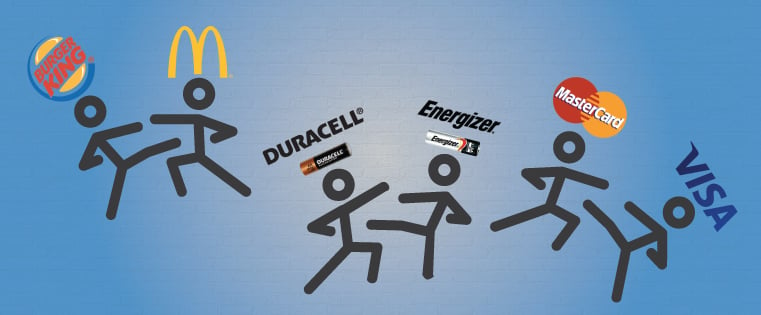
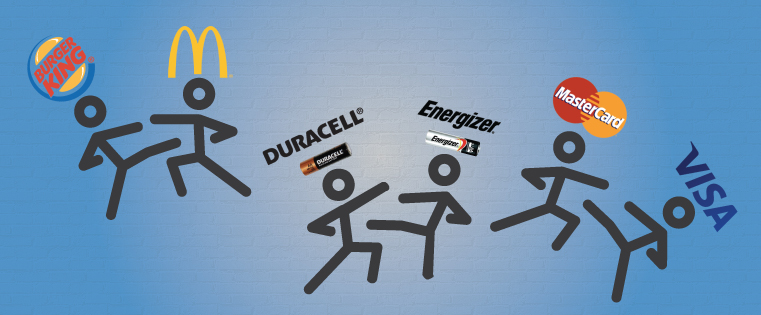
This post originally appeared on the Marketing section of Inbound Hub. To read more content like this, subscribe to Marketing.
Ba da ba ba ba, I’m lovin’ it.
We can instantly identify their logos. We can hum along to their jingles. We’re on a first name basis with their mascots. We can repeat their slogans as mantra.
How were big brands like McDonald’s able to attain such a ubiquitous status? How did they become so darn well-known?
As a marketer, I’d like to think the answer is obvious: marketing! Inventing the Ronald McDonald mascot, designing those golden arches, creating all those catchy jingles, teaming up with all those celebrities, and running all those cross-promotions with other big brands over the years … that’s what transformed McDonald’s from a California-based burger chain into a global icon, right?
Or … was it the competition? We’ve all heard that competition drives innovation. And for McDonald’s, which has been battling Burger King (among others) for market share since the late 1950s, this competition created a sort of "hamburger arms race." New burger styles and combinations were -- and still are -- being innovated constantly.
The competition uses two patties in their burgers? We're gonna use three patties in our burgers. The competition puts four slices of bacon on their burgers? We're gonna put 37 slices of bacon on our burgers ... and special sauce.
But product innovation isn't the only benefit of competition. Whether it’s McDonald’s battling Burger King for fast food supremacy, or Duracell duking it out with Energizer for the "best battery" title, or Visa wrestling with MasterCard for the credit card crown, or Fender fighting Gibson for greatest guitar brand -- both brands always end up benefiting from the brawl.
Everybody Wins?
When competing brands continually pour resources into driving awareness around a particular product or service, awareness around that product or service goes up. And that's good for everybody who provides that product or service -- a rising tide lifts all boats.
At the end of the day, Fender doesn’t care if it loses a few guitar sales to Gibson, and vice versa. The bigger problem for both brands would be if overall interest in (and demand for) guitars dropped. Hence, both brands market the crap out of guitars, even if that means customers occasionally spill over into each other's territory.
In conclusion, when big brand rivals go head-to-head, they both benefit. So I guess that means everybody wins! All the brands mentioned in this post are winners and everybody gets a trophy. Thanks for reading!
But Wait: Some Win Bigger Than Others
... Okay, I’m being told that this is America and my original ending isn’t going to fly.
So, let’s throw some major brands into the Marketing Matchup Ring of Doom (trademark pending) and see how they stack up against their respective competition. We'll look at stats and strategies from five pairs of rivals, and try to extract some marketing wisdom along the way.
First up, it's the battle of the burger joints.
1) Burger King vs. McDonald's

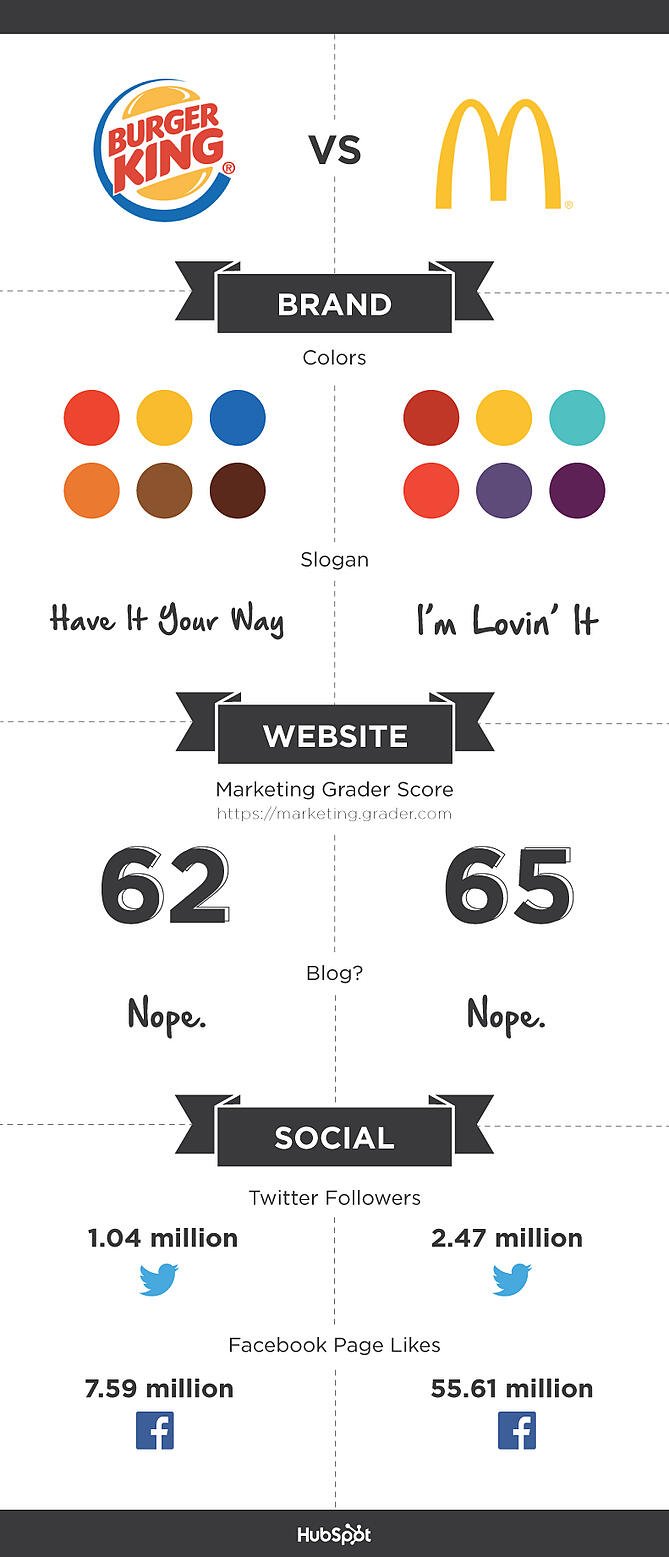

You might have already known coming into this first match that on the financial side of the house, McDonald's is the clear winner: $28 billion in annual revenue vs. Burger King's $1.15 billion in 2013.
So perhaps it's not surprising that McDonald's is dominating on the social following front, boasting more than twice as many Twitter followers as Burger King and more than seven times as many Facebook Page Likes. McDonald's gets more business and they have more customers, so it makes sense they'd have more folks following them on social.
Great. But what do Burger King and McDonald's actually do on social?
For Burger King, it's all about the food. Lots of food pics on both Facebook and Twitter. Some are your standard glamour shots, while others are a bit more fun (like playing Jenga with chocolate chip cookies).
In contrast, McDonald's seems to put more emphasis on culture and happiness in their Facebook and Twitter feeds. And while McDonald's food does get its share of the limelight -- especially in the form of customer photos that McDonald's re-shares -- their overall social presence doesn't feel as "food-centric" as Burger King's.
Their Facebook cover photos are a prime example of this. Burger King: food; McDonald's: colorful hearts.

When McDonald's does talk about its food on social media, it does so in an almost scientific way. They've now got the dude from MythBusters showing us how they make McDonald's fries, which is part of their ongoing "Our Food, Your Questions" campaign. (Spoiler alert: They make the fries out of potatoes.)
Meanwhile, this is how Burger King markets its fries on social media:
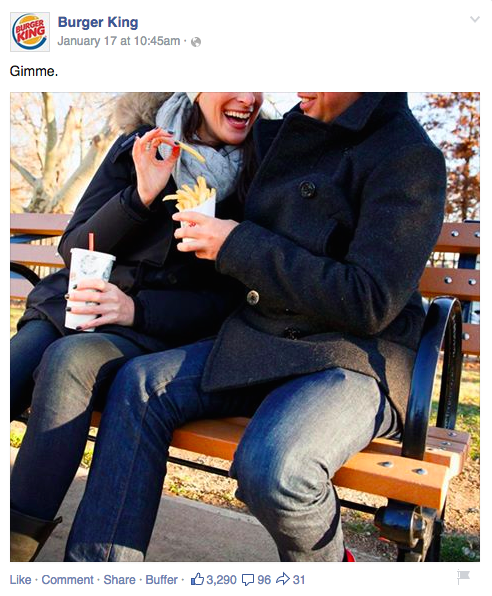
Another difference between the two burger brands is their respective spots on the quirkiness spectrum, especially in regards to Twitter. Whereas Burger King embraces oddball humor, publishing lots of funny, weird quips and comments, McDonald's often goes for the cute stuff.
FRIENDS ARE IMPORTANT FRIES ARE IMPORTANT FRIES ARE FRIENDS
— Burger King (@BurgerKing) January 19, 2015
Their friendship just got a 1-Up. pic.twitter.com/Hp6srRTG14
— McDonald's (@McDonalds) January 18, 2015
One style isn't necessarily better than the other, but it's worth noting the difference.
On the website front, McDonald's is technically the winner, as it earned a marketing grade of 65 to Burger King's 62. (Want to see how you stack up against McDonald's and Burger King? Run your website's URL through our free Marketing Grader tool.)
However, from a design perspective, Burger King's website definitely takes the cake. It's modern and responsive and is loaded with beautiful, high-quality imagery. Meanwhile, the McDonald's site feels outdated and corporate.
When we take every factor into account, however, this marketing match is an easy one to call: With its massive social following (and massive market share), the McDonald's brand reigns supreme.
Winner: McDonald's
2) Duracell vs. Energizer

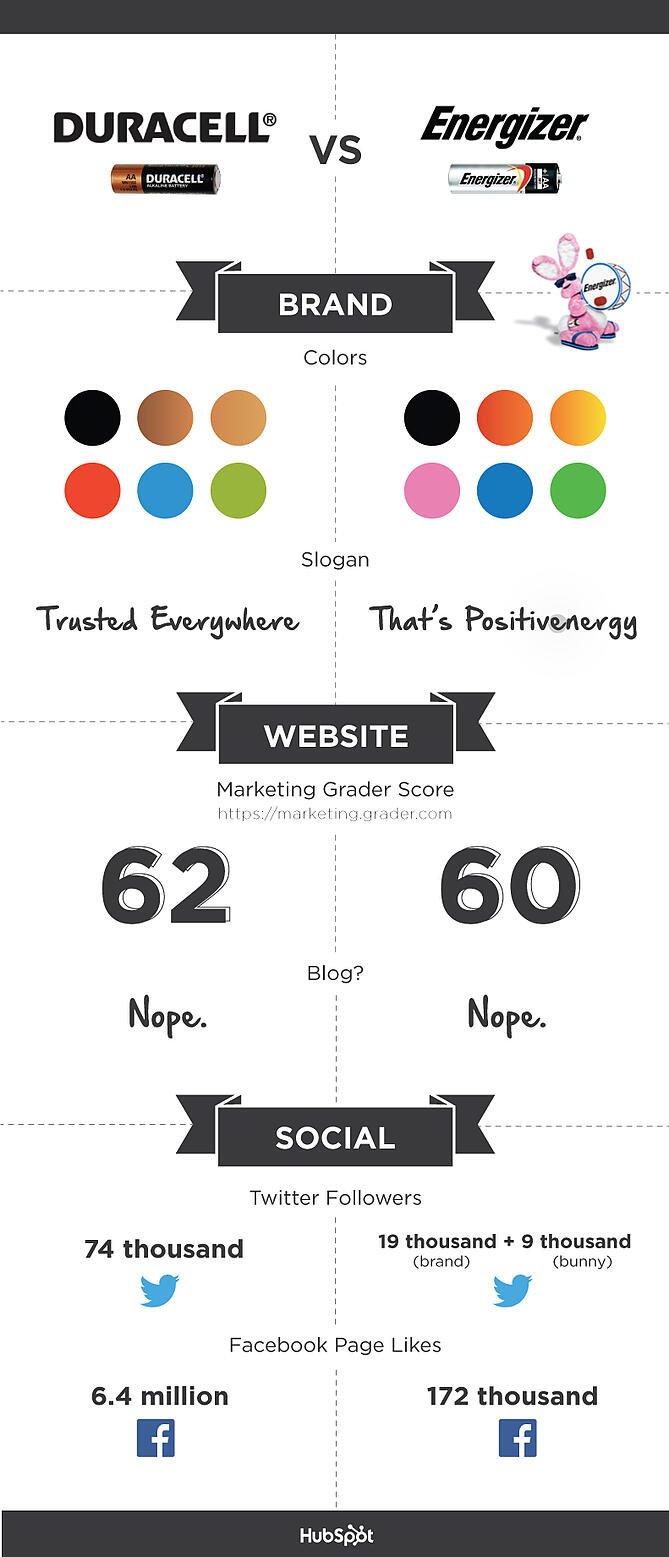

Both of these major battery brands chose qualities of actual batteries to base their marketing upon. While one chose durability, the other chose energy (or the ability to energize). Can you guess which quality belongs to which brand? ;)
Clearly, Duracell wants to be the durable battery; the reliable battery; the battery that will be there for you. Is it a coincidence that the brand uses copper (a shade of brown) as one of its main colors? (FYI: in color psychology, brown is associated with dependability.)
The Duracell marketing slogan? "Trusted everywhere."
Then, there's Energerizer. The brand that's all about energy -- energy that keeps things going, and going, and going. Whereas Duracell is known for its copper top, the classic Energizer battery uses red and yellow in its design, two colors that are both associated with energy.
The Energizer marketing slogan? "That's Positivenergy."
Now, onto the measurable stuff: From a marketing grade perspective, Duracell eeks out the win with a 62 to Energizer's 60. But given that Energizer has what I consider to be a slightly more modern-feeling website, this category is a wash.
On the social following front, Duracell is the clear winner. Even when we combine Energizer's brand and mascot Twitter accounts, Duracell still has more than twice as many followers. And when it comes to Facebook Page Likes, Duracell has more than 37 times as many as Energizer.
Neither brand, however, is as prolific in the social media space as McDonald's or Burger King. There's much less consistency, and social posting for both Duracell and Energizer increases dramatically when there's a special event or occasion (e.g. New Year's, the Super Bowl, a product launch, and so on). Otherwise, both brands are pretty quiet.
When Duracell and Energizer do post, the content is very product-heavy. You won't find any quirky quotes or cute animations on their feeds, but you will find photos -- and videos -- of batteries. Lots of batteries. Even batteries made from batteries!
Express delivery to Arizona: 700+ Duracell Quantum batteries to power communications for #SB49 #SuperBowl pic.twitter.com/JjWRcs77OT
— Duracell (@Duracell) February 1, 2015
Say hello to the world's 1st AA battery made w/ 4% recycled batteries—Energizer EcoAdvanced™! http://t.co/aCfRM2stLD #TransformingInnovation
— Energizer (@Energizer) February 3, 2015
While neither brand really shines in the social media space, Duracell is clearly doing something right (or at least better) to account for those high(er) social following scores. Perhaps its partnership with the NFL, and all the NFL-related content it's allowed to post as a result, is helping to drive its success.
In terms of market share, Duracell is the superior, claiming 29% to Energizer's 25%.
So, when it's all said and done, there's really only one way to call this match.
Winner: Duracell
3) MasterCard vs. Visa

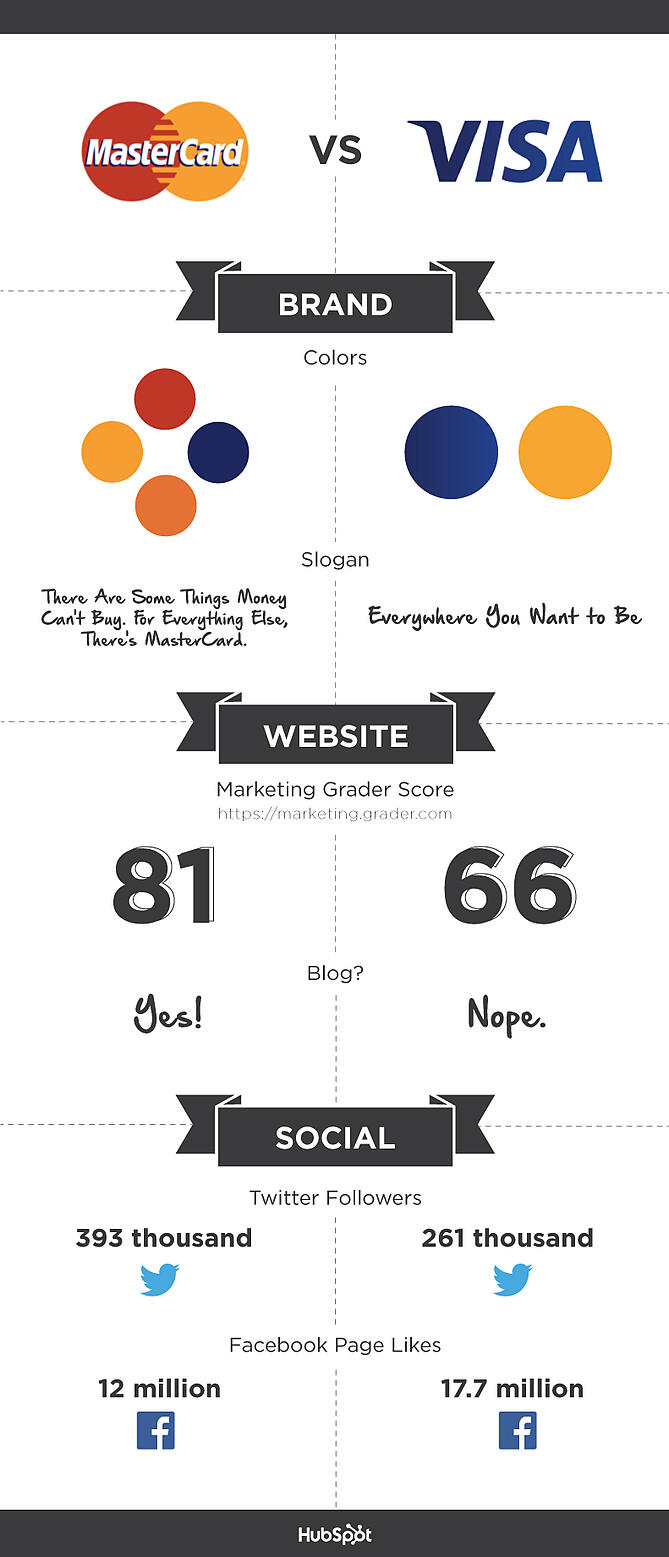

Finally, a brand that has its blogging and lead generation game together.
With an 81, MasterCard scored the second-highest marketing grade of any brand website analyzed in this post. The main reason(s) for the high score? A regularly updated (albieit hard-to-find) blog called "Beyond the Transaction," coupled with forms that visitors can use to subscribe to MasterCard's content.
The blog includes both original posts, which you can access from a top carousel (or by topic via the sidebar), as well as curated posts, which are presented Tumblr-style beneath the original posts.
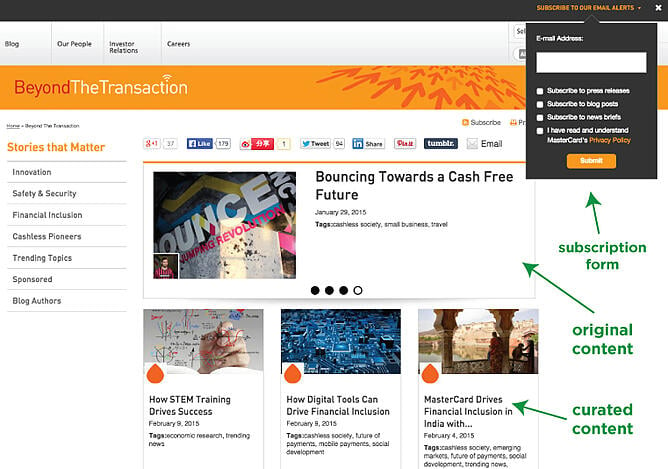
Notice how the form lets you choose the specific types of content you might want to subscribe to. (Nice touch!)
And while Visa's website is no slouch (hey, it has the third-highest marketing grade score in this post with a 66), it doesn't deliver in the blog department. While Visa does have a corporate Tumblr account, which is kind of cool (I think), from an inbound marketing perspective, it isn't as effective as MasterCard's setup.
When it comes to social following, we've got a real dogfight on our hands. MasterCard has more Twitter followers, with 393 thousand to Visa's 261 thousand. Yet on Facebook, Visa's 17.7 million company Page Likes outshine MasterCard's 12 million.
In terms of how these two brands utilize their social channels, two words come to mind: Celebrity endorsements. MasterCard recently had Gwen Stefani front and center in many of its social posts (leading up to the Grammy's), while Visa teamed up with Katy Perry (leading up to her Super Bowl halftime performance).
Hey LA! Be on the lookout for #GRAMMYs & @GwenStefani tix all over the city. #FindTheGwenabees #PricelessSurprises https://t.co/BvG0cz2DiZ
— MasterCard (@MasterCard) February 3, 2015
Sign up for Visa Checkout, the easier way to get exclusive @KatyPerry merch during her show. https://t.co/WNs0ifDW8e
— Visa (@Visa) January 31, 2015
Comarketing is also a big part of the social equation for these brands. For example, MasterCard has teamed up with brands including Lyft and Gilt for social promotions, while Visa has joined forces with the likes of The Gap and Orbitz.
So, the two brands have similar social follower counts and they employ similar social social strategies. The main differentiator thus far is MasterCard's blog and lead capture capabilities. But what about market share?
Visa has the bigger chunk of the market, claiming 45% of credit card purchases to MasterCard's 24%. If we look at the number of cards in circulation (as opposed to purchase volume), Visa is again the bigger fish, with 49% to MasterCard's 31%.
This is a tough one to call. MasterCard might be winning some marketing battles, but Visa -- with its market dominance -- is winning the war.
Can we just call this one a tie and move on? (Make your case in the comments section if you have a strong opinion one way or the other!)
Winner: MasterCard & Visa (tie)
4) Fender vs. Gibson

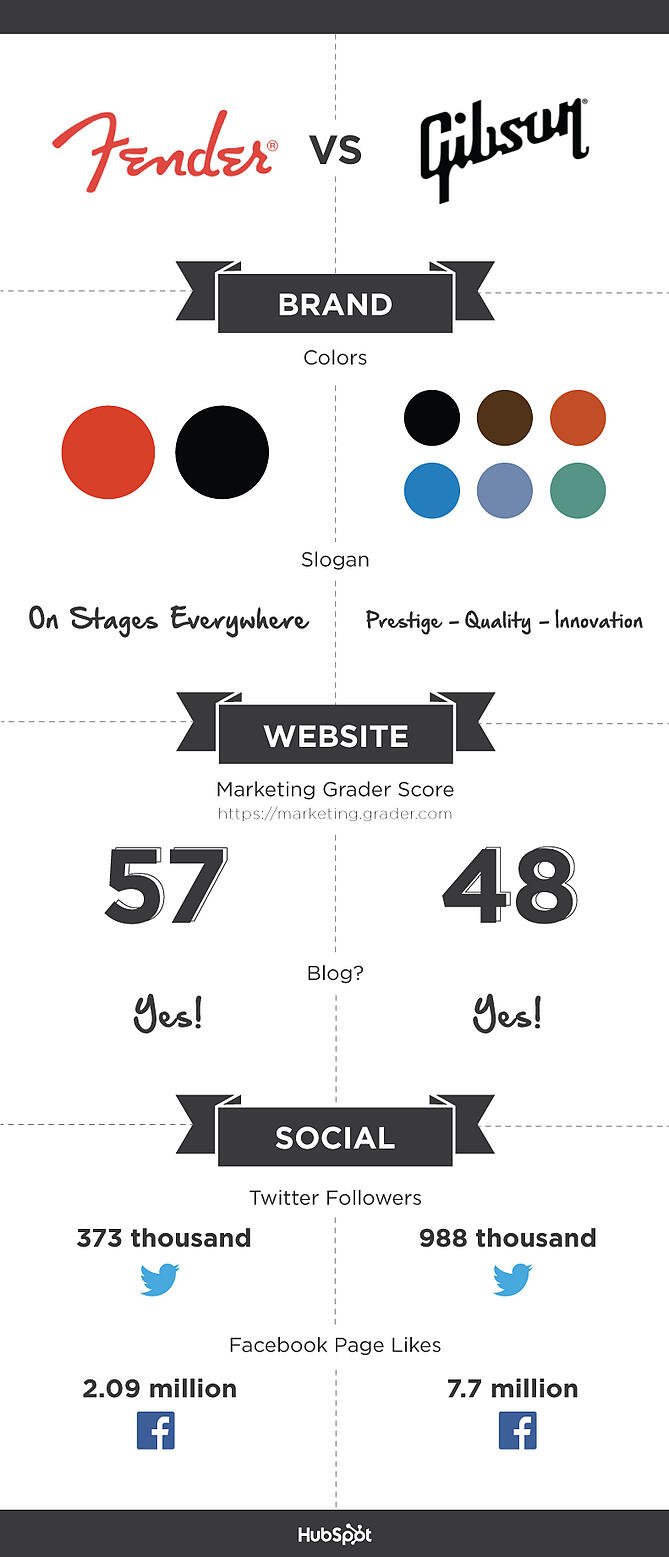

While musicians, especially guitar players, are likely familiar with these brands, here's a little bit of background for the uninitiated.
.jpg) The Gibson Mandolin-Guitar Mfg. Co., Ltd. (now simply the Gibson Guitar Corporation) was founded in 1902 by Orville Gibson. Gibson invented the archtop guitar, which has a construction similar to that of a violin. (B.B. King is known for playing one.) But Gibson is perhaps most famous for the solid-body electric guitar it released back in 1952, the Les Paul. (Jimmy Page of Led Zeppelin, Ace Frehley of KISS, and Slash of Guns N' Roses all famously played Gibson Les Pauls.)
The Gibson Mandolin-Guitar Mfg. Co., Ltd. (now simply the Gibson Guitar Corporation) was founded in 1902 by Orville Gibson. Gibson invented the archtop guitar, which has a construction similar to that of a violin. (B.B. King is known for playing one.) But Gibson is perhaps most famous for the solid-body electric guitar it released back in 1952, the Les Paul. (Jimmy Page of Led Zeppelin, Ace Frehley of KISS, and Slash of Guns N' Roses all famously played Gibson Les Pauls.)
 Then there's the Fender Musical Instruments Corporation, which was founded in 1946 by Clarence Leonidas "Leo" Fender. The Fender corporation was a solid-body electric guitar pioneer, and first gained traction with its Telecaster model. (Bruce Springsteen plays one, and they're popular in country music). But the iconic and oft-copied Stratocaster guitar is Fender's true claim to fame. Jimi Hendrix, Eric Clapton, and Stevie Ray Vaughan all famously played Fender Stratocasters.
Then there's the Fender Musical Instruments Corporation, which was founded in 1946 by Clarence Leonidas "Leo" Fender. The Fender corporation was a solid-body electric guitar pioneer, and first gained traction with its Telecaster model. (Bruce Springsteen plays one, and they're popular in country music). But the iconic and oft-copied Stratocaster guitar is Fender's true claim to fame. Jimi Hendrix, Eric Clapton, and Stevie Ray Vaughan all famously played Fender Stratocasters.
Of course, the absolute BEST way to settle the Fender vs. Gibson debate would be to have the greatest Fender guitar players of all time form a band and face off against a band comprised of the greatest Gibson guitar players of all time. It would be a "Battle of the Guitar Brand Bands," and I would gladly sell my left kidney to see it.
But let's get back to reality. In terms of marketing grader score, Fender has the edge with a 57 to Gibson's 48. Two of the factors that account for this score discrepancy: Fender uses marketing automation, while Gibson does not, and Fender includes its brand name in its page titles (which is good for SEO), while Gibson does not.
On the social following front, however, Gibson is the clear winner, with 988 thousand Twitter followers to Fender's 373 thousand, and 7.7 million Facebook Page Likes to Fender's 2.09 million.
In terms of what they're actually posting on social, the content is very similar. On Facebook, both Fender and Gibson post lots of high-quality product photos mixed in with photos (and videos) of famous musicians playing their products.

On Twitter, it's the same story -- but both also take the time to retweet folks who @-mention them, especially when it's customers showing off their new purchases.
RT @KatieFnCompton: This also arrived today! Thanks to @Fender for such a sweet guitar! So cool. pic.twitter.com/dwGpxcIUNI
— Fender® [Guitars] (@Fender) February 10, 2015
@gibsonguitar Just had this delivered! Tone, looks, love! pic.twitter.com/l4IOjJaaRK
— Mike (@Cohassetguy) February 8, 2015
And yes, in case you were wondering, that's a Stratocaster in the top (Fender) photo and a Les Paul in the bottom (Gibson) photo.
Now, onto market share. We finally we have a close one in this category: In 2012 (the most recent year I coul find sales data for), Gibson did $325 million in revenue while Fender did $350 million. It's pretty darn close!
So, when it's all said and done, who's the winner? My vote goes to Gibson, and here's why: Even though it didn't get as high of a Website Grader score, and its sales were slightly lower than Fender's, Gibson's social following is substantially larger.
What's more, when I Googled "famous Les Paul players" during my research for the opening of this section, Gibson's own content showed up first in the search results: "15 Iconic Les Paul Players". In contrast, when I Googled "famous Stratocaster players" I had to scroll to the bottom of the search results to find Fender's entry: "Fifteen Strat Players for the Ages."
Winner: Gibson
5) BMW vs. Mercedes-Benz

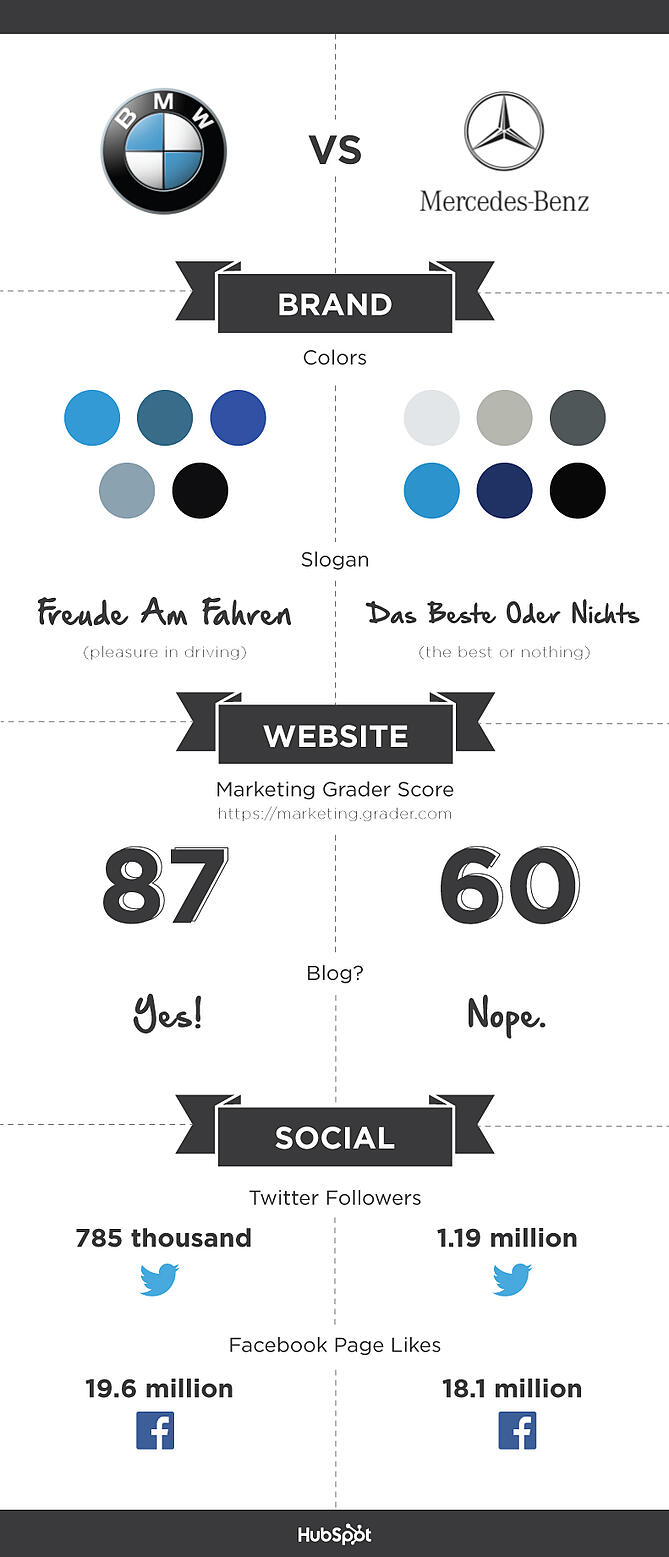

Now, on to an international example. Here we have the battle of the luxury German car brands: BMW (based in Munich) and Mercedes-Benz (based in Stuttgart).
Before we dive in, it's worth noting that both BMW and Mercedes-Benz have USA-specific websites, and in some cases, USA-specific social media accounts. But for this exercise, I'm focusing exclusively on their primary, international identities. (So, for example, while you might recall BMW's slogan being "The Ultimate riving Machine," that's actually their American slogan, not their international one.)
Alright, on to the good stuff. With a marketing grade of 87, which happens to be the highest grade of any brand on this list, BMW handily defeats Mercedes-Benz (marketing grade: 60) in the website category.
The main reason for BMW’s domination: a well-maintained (and well-designed) blog, which drives lots of social shares.

On the social front, things are a little closer. Mercedes-Benz is winning the Twitter war with 1.19 million followers to BMW’s 785 thousand. However, BMW has the advantage on Facebook, with 19.6 million Page Likes to Mercedes-Benz’s 18.1 million.
What are these rival car brands up to on social? They share a very similar playbook, which consists primarily of one play: Post beautiful photos of cars! (Both brands also post beautiful videos of cars … but I’d argue that’s just a variation of the first play.)
Another popular move (which we saw in the Fender vs. Gibson battle) is to retweet customer- and fan-submitted photos. Both BMW and Mercedes-Benz do this, and they also @-mention customers to congratulate them on their new rides, which is a nice touch.
@OfficialJakeD Well, congrats are in order!
— BMW (@bmw) February 17, 2015
@Habichuelas24 Congrats, Marc :) We love the color!
— Mercedes-Benz (@MercedesBenz) February 17, 2015
The winner of this automotive marketing melee? I say BMW, due primarily to their stellar blog. And when we look at revenue, the numbers help to reinforce my choice: In 2012 (the most recent year I could find apples-to-apples data for), Mercedes-Benz had revenues of €61.66 billion. In that same year, BMW pulled in €76.84 billion.
Winner: BMW
6) Coca-Cola vs. Pepsi

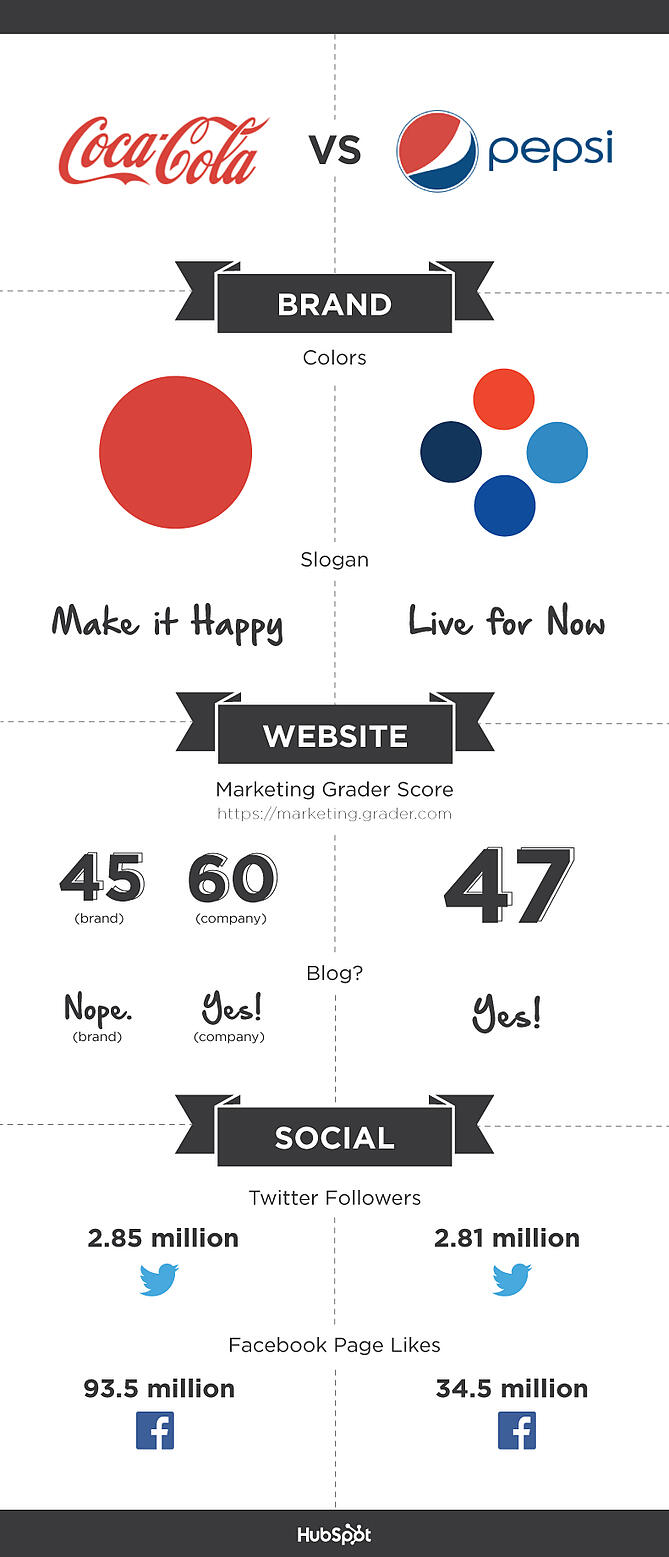

I know, I know ... the whole "Coke vs. Pepsi" thing has been done before. Many, many times before.
Nasdaq did a cool "by the numbers" piece on it a year back, and Business Insider created a pretty decent timeline/slideshow on the topic in 2013. And heck, we even ran Coke and Pepsi through the Marketing Grader back in 2011 and wrote about the results.
Most of you already know the winner here: Coca-Cola. It's not just the superior market share (Coke controls 42% of the carbonated soft drink market to Pepsi's 30%) or Coke's larger social following -- though those statistics certainly help.
I think the real reason why Coke wins is because "Coke" has managed to become nearly synonymous with the words "soft drink" and "soda" and "pop." Heck, in some parts of the U.S., particularly the South, people do use "Coke" in place of those generic words.
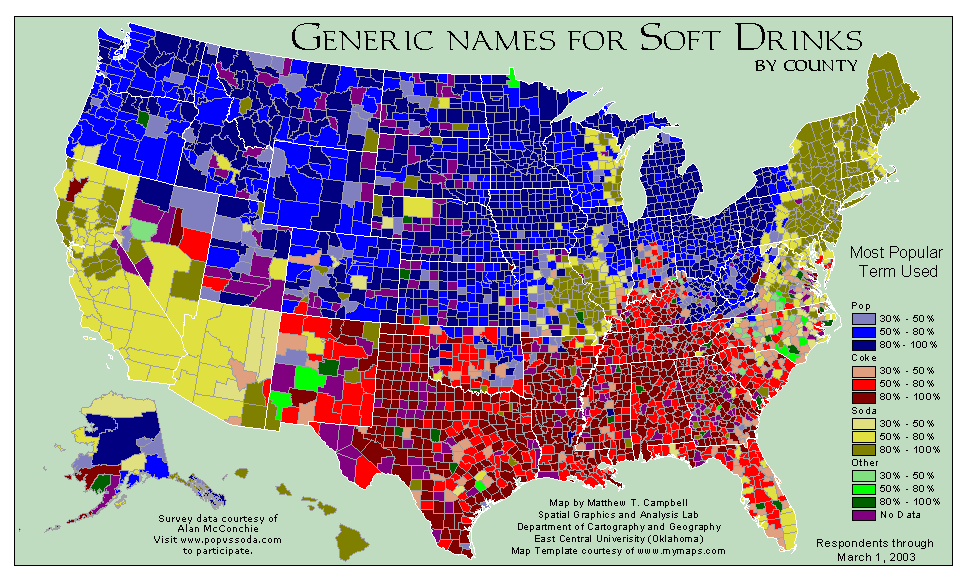
Another (anecdotal) reason why Coca-Cola wins: they invented Santa Claus. (I mean, not really, but close enough.)
Ok, so we know Coke is the winner, but for the sake of science, let's take a look at how Coke and Pepsi's marketing strategies differ.
To start, a glimpse at their respective websites reveals a clear distinction between the two: Pepsi is going all-in on the millennial demographic, while Coke is content in being the "classic" brand.
Whereas the homepage of the super-modern Pepsi site features these cool cards for displaying videos, photos, and other content, the Coke website is pretty old-school. There's a top nav, a slideshow (with only one image, for some reason), and a Coke TV spot embedded smack dab in the center.

In the social posting department, there's a similar sort of vibe: Pepsi is appealing to youngsters with its invincible-high-school-student-inspired "Live for Now" slogan, while Coke's slogan, "Make It Happy," is a bit calmer and more cross-generational in its appeal.
When you scroll through Pepsi's Twitter feed, you'll finds lots of photos and videos of young people, especially young musicians.
When your hero NAILS an #OutoftheBlue performance on stage at the #GRAMMYs pic.twitter.com/F5peZD06iL
— Pepsi™ (@pepsi) February 9, 2015
Meanwhile, Coke has recently been using Twitter to help "spread happy instead of hate" on the internet.
Give the Internet something to smile about. Spread happy instead of hate and inspire others to follow. #MakeItHappy http://t.co/OYXSsA1AqW
— Coca-Cola (@CocaCola) February 3, 2015
Ultimately, I think the Coke vs. Pepsi marketing battle boils down to this: Coke = Happy. Pepsi = Cool. Coke is really marketing happiness, not Coke. But if you drink Coke, it will make you happy! Pepsi is really marketing a cool lifestyle, not Pepsi. But if you drink Pepsi, it will make you cool!
But at the end of the day, Coke takes the cake.
Winner: Coke
So, there you have it: Six brand battles have come to an end. What did you think of the outcomes? Would you have picked different winners? Sound off in the comments section below!




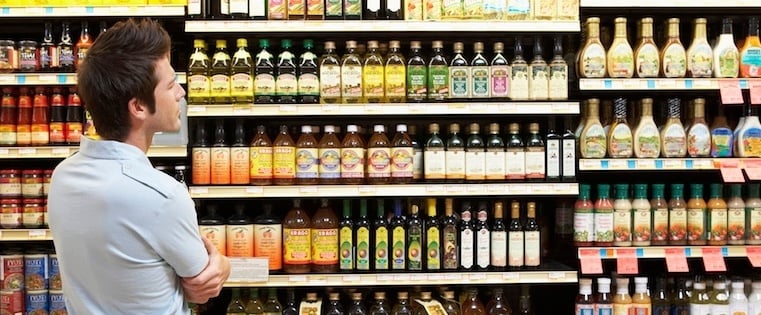
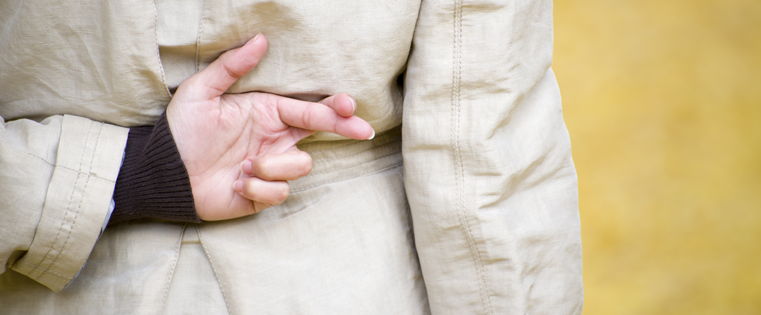

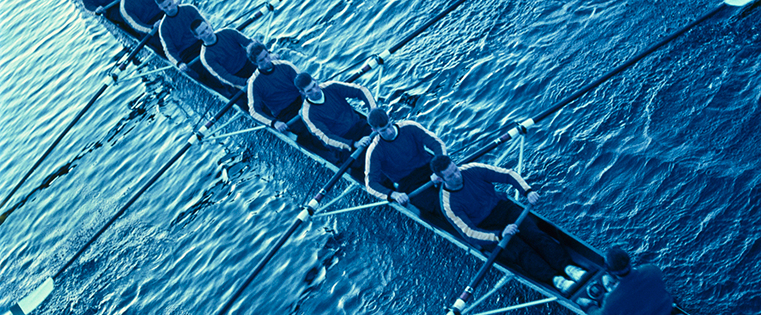


![How Brands Can Build a Loyal Audience [Infographic]](https://blog.hubspot.com/hs-fs/hub/53/file-2451913158-jpeg/loyal-audience.jpeg)